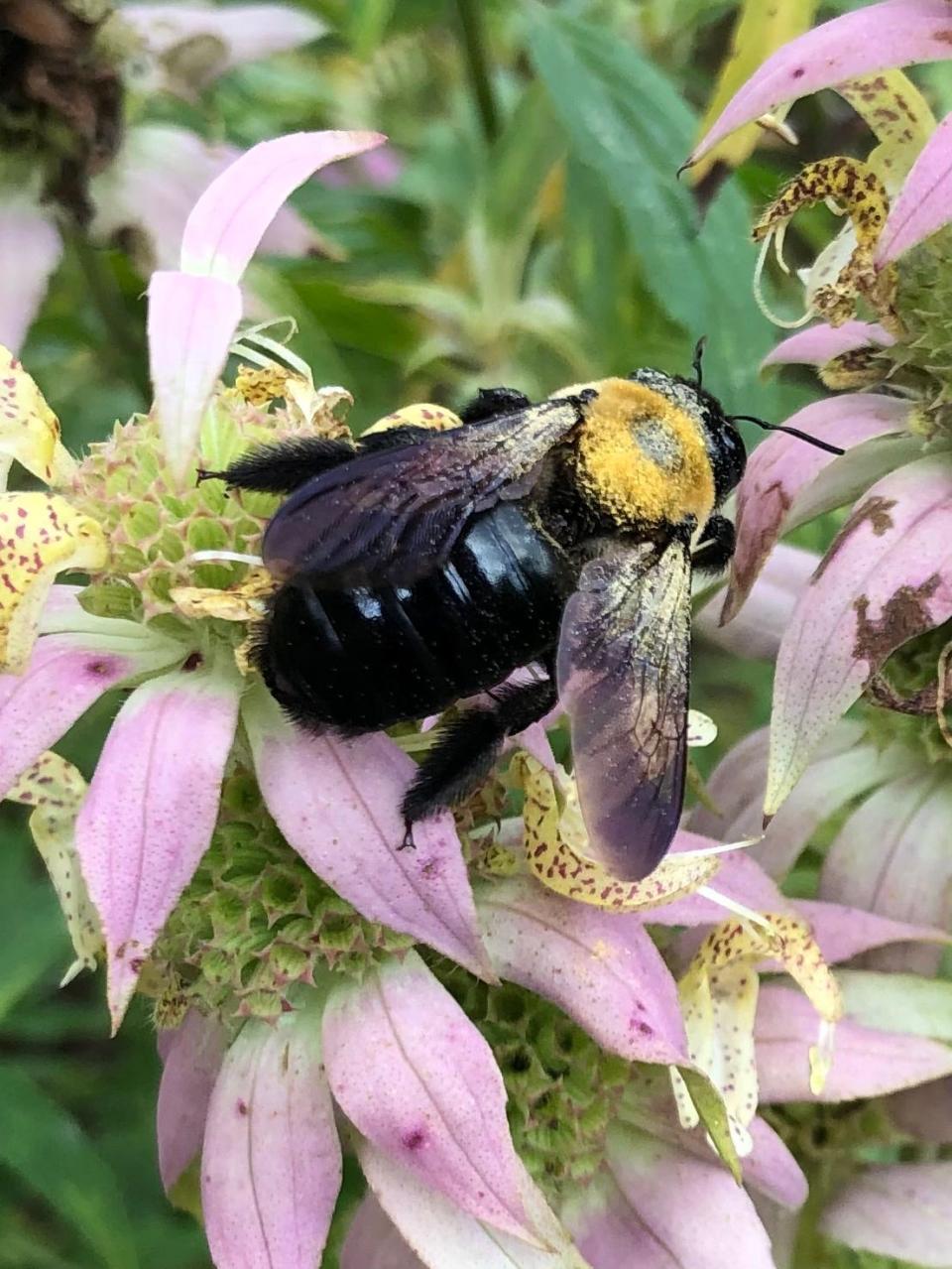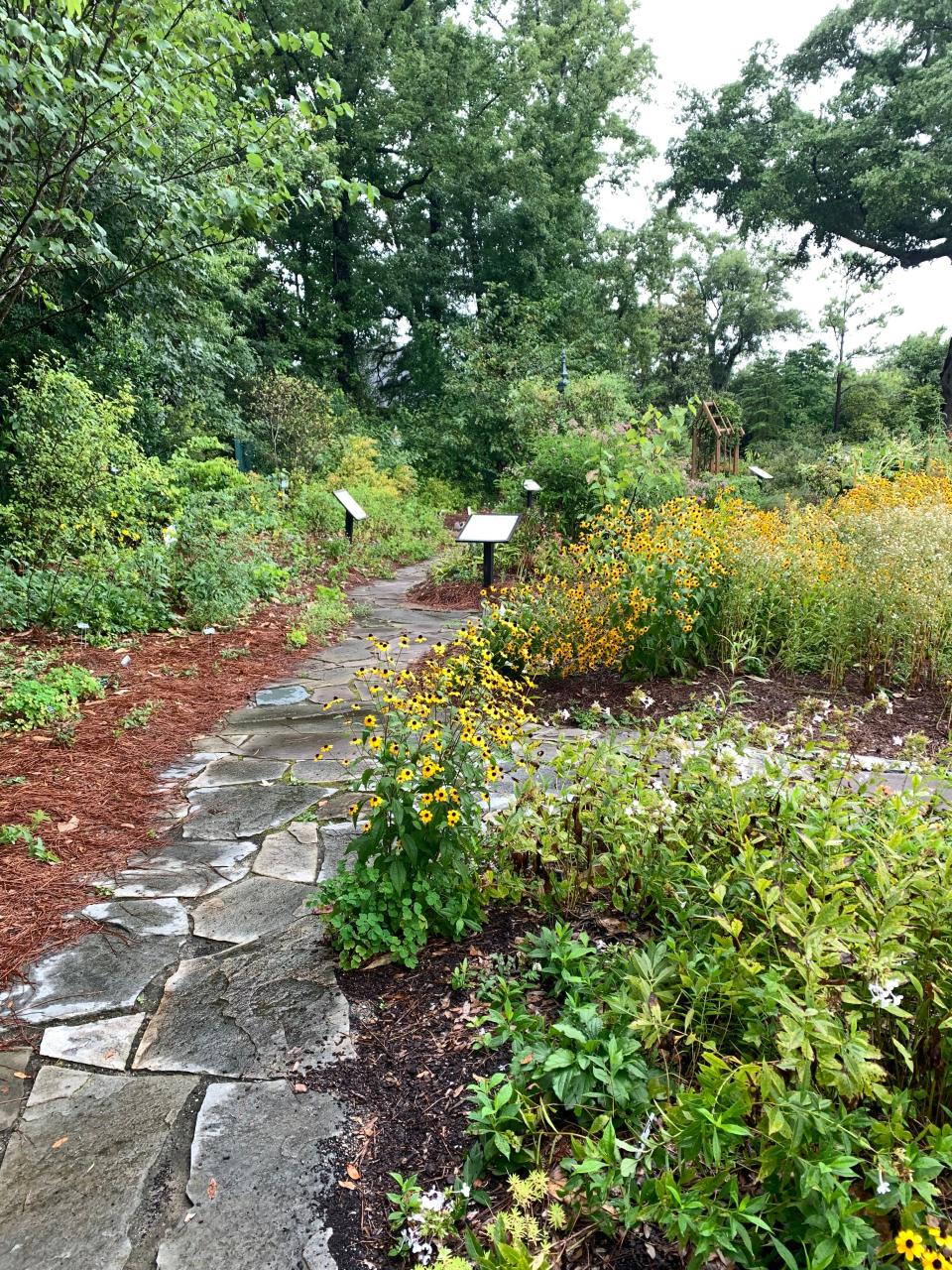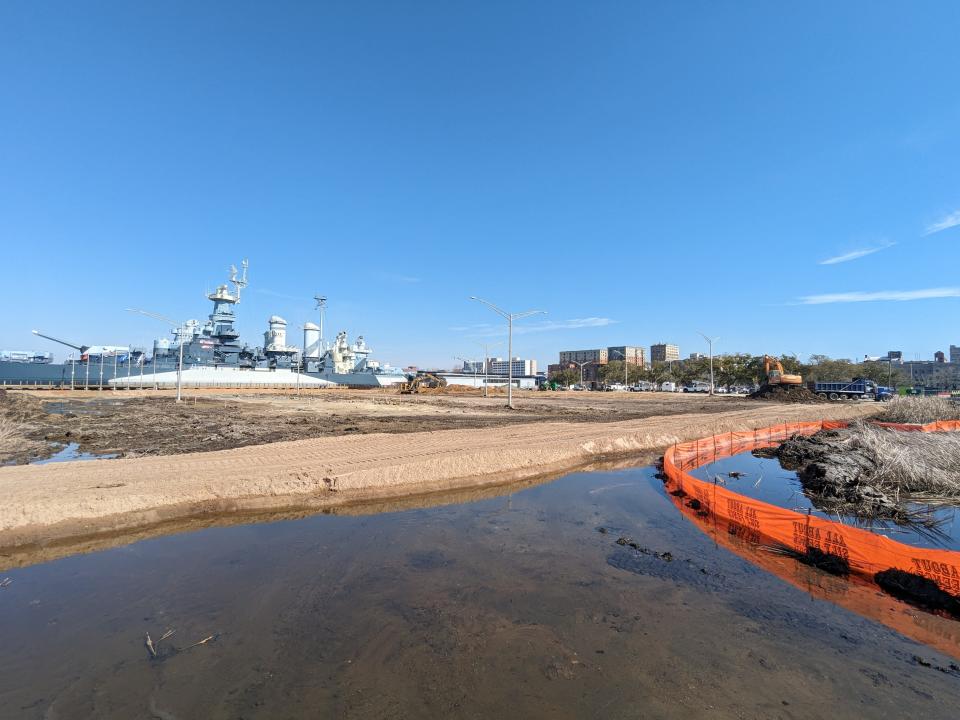Gov. Cooper and Sen. Rabon want to use native plants in state landscaping projects. Why?
- Oops!Something went wrong.Please try again later.
- Oops!Something went wrong.Please try again later.
The number hovers around 14 percent. That's how many plants sold in North Carolina are considered native.
Horticulturists, researchers, state Sen. Bill Rabon, R-Brunswick, and now Gov. Roy Cooper believe that number is much too low and is costing the state's flora and fauna in the process.
But officials say increasing the number of shrubs, plants and trees endemic to North Carolina in yards, along roads, in parks, and in backyards isn't as easy as simply saying it's the right thing to do − even if most people already know Bradford pears are stinky, fragile, invasive trees that should be avoided.
Here's a look at some of the challenges to increasing the use of native plants in North Carolina, and steps already underway to convince landscapers and backyard gardeners to plant Virginia creeper, for example, instead of English ivy.
The power of the pen
Last month, Cooper signed Executive Order 305.
While the order focused mostly on aspirational goals to preserve millions of acres of North Carolina forest and wetlands by 2040, it also included language ordering state agencies to whenever possible use native plants for landscaping projects on state-owned property.
Native North Carolina plants generally are defined as those that occurred in the state before European settlement. Non-native, or exotic, plants are those that are not native to the Tar Heel State.
"State-funded or permitted projects and activities, including those administered on behalf of the federal government, shall avoid introducing non-native plants," the order states. "To support native biodiversity, cabinet agencies shall also consider the native plant practices of private properties in future lease agreements."
Since the state is North Carolina's largest landowner, with universities, state parks, historic sites, and right of ways along roads maintained by the N.C. Department of Transportation covered by the order, the move could mean a dramatic increase in the number of native plants appearing across the state.
The governor's order piggybacks on legislation that's been championed by Sen. Bill Rabon for years. His Native Plants Act, which became law last year, requires plants native to the Southeastern U.S., "with a strong preference for plants native to North Carolina," to be used in landscaping projects in state parks and along state highways.
GOING GREEN: Gov. Cooper wants to protect millions of acres of NC forests, wetlands. Is it feasible?

Shouldn't we be going native all the time already?
While a question and would seem to have a simple answer, it isn't, well, that simple.
Dr. Chris Moorman, a wildlife ecologist at N.C. State University, said landscapers often have to pick plants to meet a certain objective, say providing shade for a parking lot. While going native naturally provides some of the best food and groundcover requirements for local wildlife, it might not meet the goal of the project, and thus a non-native plant is a better fit for that particular role.
"Native plants aren't always necessarily the only answer," said Dr. Barbara Fair, a landscape extension specialist at N.C. State.
She said that in our urban areas where the landscape has been changed dramatically by humans, sometimes non-natives are just a better fit − especially when it comes to meeting certain functions and promoting biodiversity.
"They can just often survive and thrive better in these very altered environments," Fair said, ticking off the benefits from mitigating heat to handling stormwater runoff that urban trees offer.
PRETTY AND SUSTAINABLE: Why native NC plants can be good for your garden and the coast

What are the advantages of going NC-plants first?
The advantages for native wildlife and insects is easy to see.
"From an ecological standpoint, they have co-evolved with the local communities, including the plants and animals," Moorman said. "Because native wildlife co-evolved with native plants, there are often critical linkages between the individual plants and animal natural history."
Native plants also reflect North Carolina's rich ecological history and are often tied into many of the state's cultural traditions and foods.
But there are other, more pragmatic reasons to go native, too.
Native vegetation is designed to better handle North Carolina's often hard growing conditions, which climate change is forecast to exasperate − not to mention stronger and bigger hurricanes.
WARMING UP: Why Wilmington's neighborhoods aren't created equally when it comes to handling the heat
With natives often more drought- and heat-tolerant than non-native plants, and with longer periods of dry, hot weather forecast for North Carolina in coming decades, officials say they are often a hardier bet than exotics from another part of the country or world. Native coastal plants are also generally better able to withstand salt water, which can make them a better alternative for waterfront homeowners with sea levels projected to keep rising in coming decades and tide surges set to increase.
Then there is the popularity of the Tar Heel State.
North Carolina's population in 2000 was just over 8 million. It is estimated to be nearly 10.9 million by April, according to the latest U.S. Census figure. Projections estimate the state will be home to nearly 14 million people by 2050.
"Urban development removes much of the pre existing vegetation cover, so landscaping with native plants can return that lost vegetation cover, along with the food and cover the plants provide for wildlife," Moorman said. "Animals are critical dispersal agents, especially birds, so fostering the linkage between native plants and wildlife helps foster native plant persistence."
LIVING WITH WATER: Why the Battleship North Carolina is turning part of its parking lot into wetlands, tidal creek

Is going native easy?
Not as easy as it should be, but that hopefully will change in the coming years, officials said.
"People plant what they see in big box stores and what they see planted around them, which largely is not native plants," Moorman said.
They also often look for what they used to have in their gardens before moving to North Carolina. But what worked in Connecticut or Ohio might not be the best choice in hot, sandy and often nutrient-poor soils of North Carolina's Coastal Plain.
There's also a financial risk for landscapers, homeowners and even nurseries to increase their stock of native plants if people either aren't going to buy them because they don't know what they are or they die quickly when planted due to being placed in the wrong conditions.
"That's the million-dollar question, really, and it's a very complicated answer," Fair said of increasing the stock of native plants.
She said many native trees aren't fast growers − one of the reason crepe myrtles are so prevalent in urban areas − and people's tastes can be finicky. Then there are issues for the plant industry, like how quickly can they ramp up production of native flora and is it a wise investment.
"Yes, it's certainly something we should work to promote," Fair said, noting the educational outreach efforts many state agencies and local nurseries do to promote native plants. "But we have to realize this is a long-term process that we need to be thinking about."
Want to go native? Here are some resources:
N.C. Botanical Gardens: Lots of native plant resources for gardeners
N.C. Native Plant Society: The name says it all!
Coastal Landscapes Initiative: A collaborative effort among agencies that includes plenty of native plant guides and videos.
N.C. Sea Grant magazine: Article that highlights 12 native plants that thrive in the harsh conditions found along the N.C. coast.
Tips for going native in New Hanover County: Local cooperative extension office offers useful pointers.
Landscaping for wildlife with native plants: Useful tips from the N.C. Cooperative Extension.
Going native for the birds: Making your urban or suburban garden an oasis for local birds.
Want to attract butterflies? Add some flying colors to your backyard by going native.
Reporter Gareth McGrath can be reached at GMcGrath@Gannett.com or @GarethMcGrathSN on X/Twitter. This story was produced with financial support from the Green South Foundation and the Prentice Foundation. The USA TODAY Network maintains full editorial control of the work.
This article originally appeared on Wilmington StarNews: Why politicians are pushing NC to think native when it comes to plants

